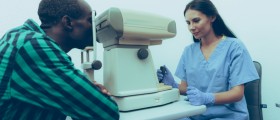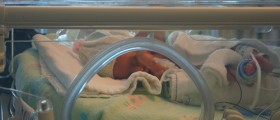
Overview of Diabetic Retinopathy
Diabetic retinopathy is a vision complication brought on by long term diabetes. Diabetic retinopathy is characterized by progressive vision loss and is the leading cause of blindness in America among adults. In its early stages, retinopathy does not reveal any symptoms so regular eye checkups for people with diabetes are mandatory. As a result of diabetes blood vessels start to narrow down reducing blood flow in the body. The narrowing of blood vessels can lead to blockage and hindering of organ functions. Malfunctioning blood vessels are particularly harmful for the eye, and mainly the retina. Further, retinopathy has two distinct stages including the non-proliferative and proliferative stage. The non-proliferative stage is characterized by little to no symptoms. The mild signs of the disease include slight changes in vision. The proliferative stage is characterized by swollen blood vessels which leak blood and block the retina. In addition, the new blood vessels that are formed in the eye are malfunctioning and further increase the problem. In the most severe cases retinopathy leads to retinal detachment and ultimately to blindness. Regular checkups are necessary because retinopathy does not produce many symptoms until the proliferative stage when the disease is already advanced. The most common symptoms of the condition include pain, partial vision loss, reduced peripheral vision, blurriness, and floaters. Once the symptoms appear the condition is no longer stoppable and treatment is loses its efficacy.Surgery
Pregnancy and Retinopathy
One of the strongest risk factors for progressive retinopathy is pregnancy. If a woman had a mild case of retinopathy the pregnancy would make it severe. The primary type of control for retinopathy includes stabilizing blood sugar levels and blood pressure. Similar steps can be taken during pregnancy to avoid or stall the worsening of the condition. Individuals suffering from diabetes need to have regular eye checkups in order to prevent vision loss. On average, a diabetic person will develop retinopathy after 15 years provided that they have relatively poor care. If the person takes all the precautionary steps to stop retinopathy it is likely that the disease will develop after 20 years of the first diabetic symptoms. If there was no retinopathy before the pregnancy but the care was nevertheless poor there is a strong possibility that the first symptoms will show. About 10 percent of diabetic women will develop retinopathy during pregnancy. If the individual had mild to moderate symptoms of the disease it is probable that towards the end of the pregnancy the retinopathy will escalate into the proliferating stage and laser surgery will be required as soon as possible. In many cases more than one laser treatment is needed to solve the problem. Clinicians also advise women who suffer from the condition to get laser treatments as soon as they find out about the pregnancy to hinder the progression of retinopathy.Laser Treatment During Pregnancy
Laser treatments for retinopathy during pregnancy are very similar to those administered on non-pregnant individuals. The doctor performing the procedure has to be made aware of the fact that the patient is pregnant. The individual is asked to sit in front of the laser where eye drops for dilating pupils will be applied. The drops are safe to use during pregnancy but it is advised that a lesser amount be given to the patient. For pregnant individuals who are not affected by retinopathy clinicians recommend one eye exam per trimester. Women who had diabetes induced vision problems before becoming pregnant require monthly controls. It should be noted that Type II diabetes is more difficult for the pregnancy, but does not lead to retinopathy as often as Type I. There is no cure for retinopathy but the causes are generally well known. The disease progresses quickly during pregnancy due to circulating growth factors. In addition, previous pregnancies are not accurate indicators of the progression of retinopathy. If the woman’s vision was not reduced with her first child that does not mean the second pregnancy will be the same, and vice versa. Other than creating or boosting retinopathy, pregnancy also decreases kidney functioning in diabetic women. Lastly, it is not uncommon for retinopathy to keep on progressing the year after the pregnancy so additional laser treatments might be necessary, while checkups are mandatory.
















Your thoughts on this
Loading...